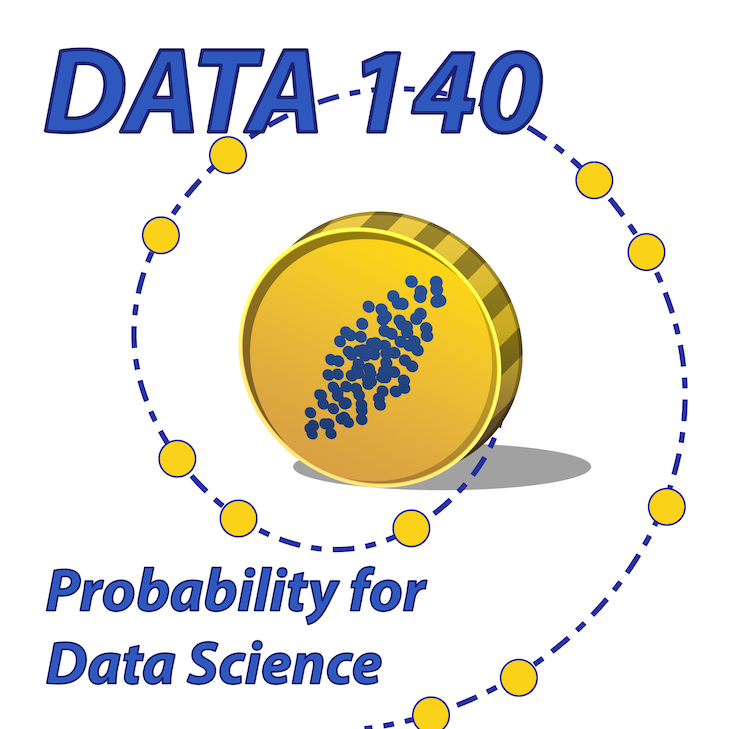8.6. Exercises#
1. A bridge hand is a simple random sample of 13 cards from a standard deck of 52 cards. The face cards are the Jacks, Queens, and Kings; there are 12 face cards in all. Let
(a) Fill in the blank with the name of a distribution along with the appropriate parameters:
(b) Find
(c) Find
2. Let
value |
-2 |
-1 |
0 |
1 |
|---|---|---|---|---|
probability |
1/8 |
1/2 |
1/4 |
1/8 |
Find
(a)
(b)
(c)
(d)
(e)
3. A student is taking a True/False test in which there are 30 questions. For each correct answer, the student will get 2 points. For each wrong answer, the student will lose 1 point. If the student leaves a question unanswered, the student will get 0 points for that question.
The student answers all of the questions by rolling a die. If the die shows 1 or 2 spots, the student doesn’t answer the question. If it shows 3 or 4 spots, the student chooses False. If it shows 5 or 6 spots, the student chooses True. Find the student’s expected score on the test.
4. Let
(a) Find
(b) Find
5. A fair
6. Fix a positive integer
(a) Find
(b) Find
7. A group of 100 students contains 20 Data Science majors. I pick students from the group one by one at random, until I pick a Data Science major. Let
In each part below, provide a numerical answer as an integer
(a) Find
(b) Find
8. A robot types on a 26-letter keyboard that has lowercase letters only. Each letter is chosen independently and uniformly at random from the alphabet. If the robot types
9. A box contains
10. Let
11. Suppose there are
12. The distribution of a random variable
(a) Find
(b) Let
13. Use probability theory to explain why the math identity below is true for all
14. Survey respondents understandably don’t like to answer questions about sensitive topics such as illegal drug use. If data scientists want to estimate the proportion of illegal drug users in a population, they have to devise methods of getting the information they need while maintaining the privacy of the individual respondents.
Randomized response schemes are often used in such situations. In one such scheme, each surveyed person is given a coin and asked to answer YES or NO after following these instructions out of sight of the surveyor:
Toss the coin.
If it lands heads, then truthfully answer, “Do you use illegal drugs?”
If it lands tails, then toss it again and answer, “Did the second toss land heads?”
This way each respondent answers YES or NO but the surveyor doesn’t know which question was answered. The data scientists then have to estimate the proportion of illegal drug users based on the overall proportion of YES answers, which includes the YES answers to the second question.
Let the unknown proportion of illegal drug users in a large population be
(a) Let
(b) Use

